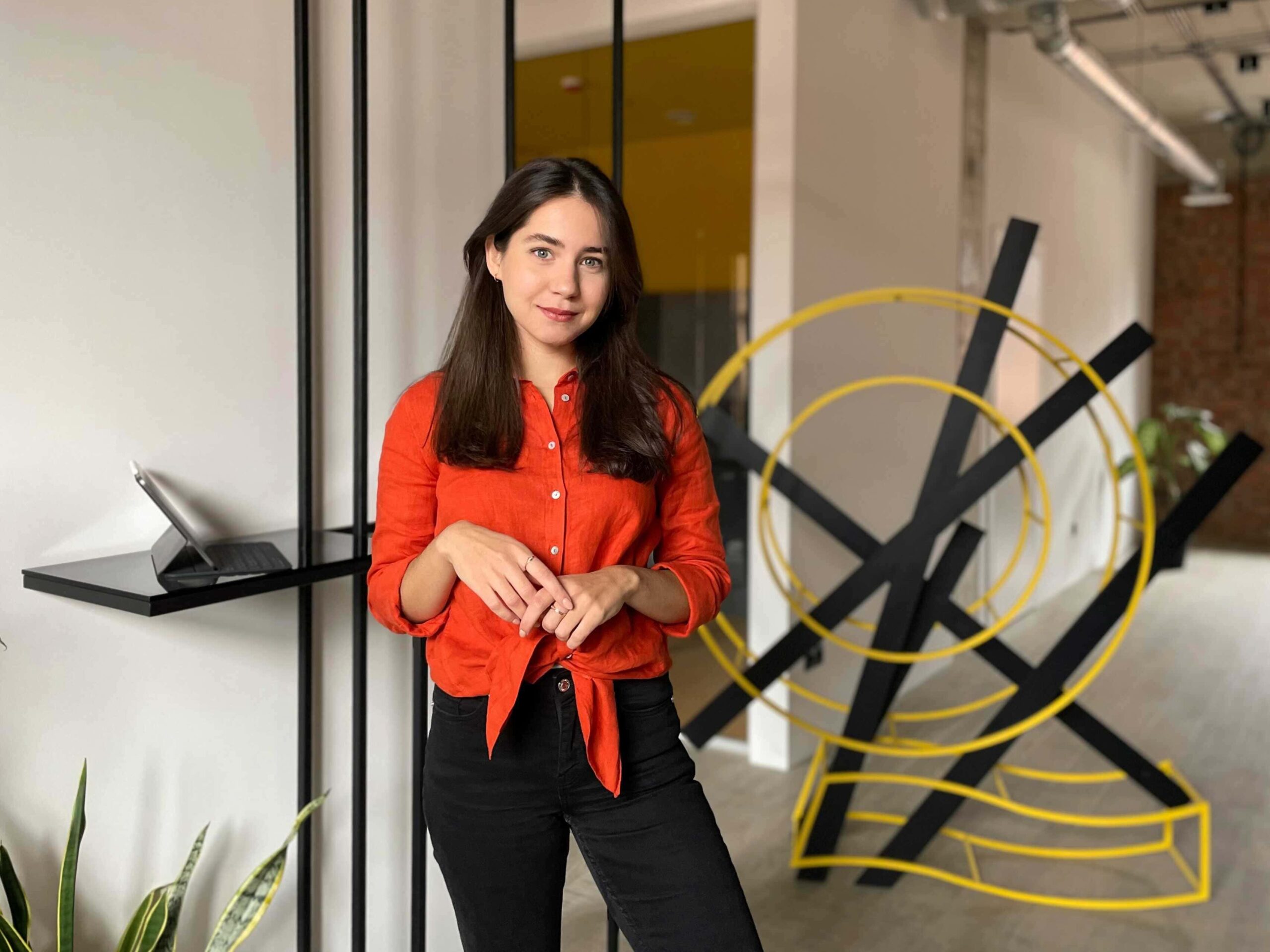Okay, Qub: how does a productive Digital Product Design workflow look like?

It’s already proven that optimized workflows ensure better communication within the team and engage its members in the design process. But how does the work process affect businesses? Kate Vitkovska, our Product Designer, explains what is meant under “optimization” here and what benefits it brings. Let’s move on to the interview!
— What is the ideal product design workflow, and how does it affect businesses?
I think it’s better to use “build properly” instead of “ideal” in this case. And the proper design workflow means the one, which in a minimal number of iterations, enables designers to get the working product that fulfills the customers’ & market needs.
Moreover, if the working process is built right, it will further adapt to various contexts.
— Kate, name, please, the benefits that businesses get out of a good workflow.
The benefits form up a chain: less time — fewer mistakes — less spending.
The main advantage of a well-built workflow is that a client very soon gets first results because of quick & productive iterations with a detailed research phase. Thus, the product can be tested immediately and, finally, meet the target audience.
Simply talking, while others will be preparing an ideal product — the unideal one will break into the market and win customers’ hearts.
— Can you tell, what’s the designer’s role in the workflow, and which — the customer’s?
The role of both is equal. Designers should consider, research and use all the data they already have on the project not to provoke extra work. And the client’s responsibility is to synchronize with the processes, share information, and work with a team to get needed results.
— Well, we’ve discussed what the designers’ team should do. And what — shouldn’t? Are there any common mistakes?
According to experience, practice & knowledge, every designer has their point of view. But still, designers follow the approved flow, consisting of three stages:
- setting tasks
- searching & generation a solution
- validation & realization.
Mistakes or difficulties during the workflow may happen because of the lack of experience. Inexperienced designers usually don’t use their time and tools properly. They tend to use the tools which bring no value to the product and do work for work.
— And what mistakes do customers usually make?
Perhaps, the lack of time dedicated to the researching phase is the main sore point. There is a spread thought that design is magic, and the result can be born in itself without research, analyses, and communication. But quality digital products need to be deeply analyzed, iterated, and tested.
— So now it’s interesting to find out how digital design product workflow is built at Qubstudio.
At Qubstudio, we have 15+ years of experience, and during that time, we’ve optimized our product design workflow as a digital product design agency. Our experts use generally accepted methodologies, but with our tailor-made approach.
We promote the idea that life is dynamic, approaches and tools keep changing, but basic knowledge of techniques forms a skeleton. And any additional information enhances that frame, the base.
Strategically, the main points are the project on the level of idea, conceptualization, prototyping, testing, realization, transferring to the development phase, and evaluating.
According to the customer’s request, we form the project team — and that’s the most variating stage. Sometimes a team may consist of a designer and a PM, and sometimes it needs to be extended. So that depends. But despite all the flexibility, we know what we want to get as a result precisely.
— Nice, Kate! What would you like to say as the conclusion?
I always keep repeating: it’s better to work and get an unideal result, as sooner you’ll fix the mistakes. The worst is to do nothing.
Thus, the digital product design workflow is the iteration process from a working product version to the complete one. At Qubstudio, we don’t prefer to work much — we aim to work effectively, so treat our time wisely.



